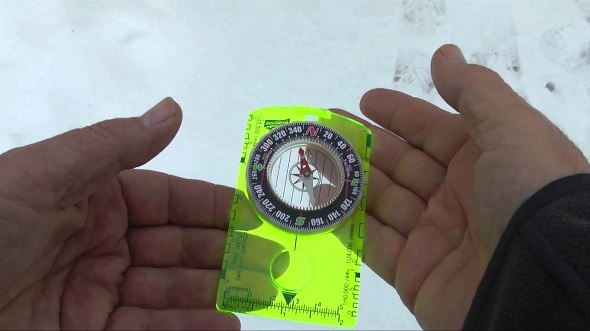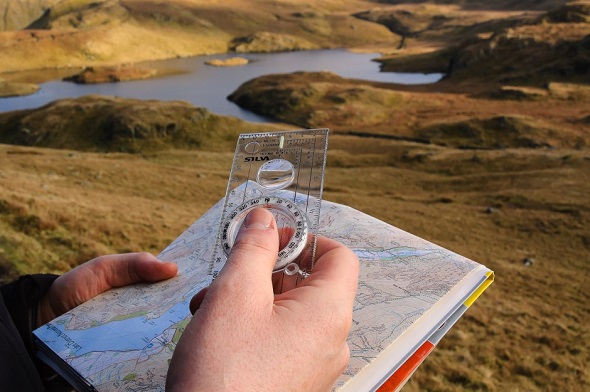If you have the will to explore, inspired by the achievements and the adventurous spirits of great explorers like Ferdinand Magellan, Marco Polo, Vasco da Gama, and Percy Fawcett you might be wondering on the basic equipment needed to set out on such an adventure, specifically the navigation equipment like good-old compasses and rather new GPS (Global Positioning System) devices.
Perhaps we can clear out some of your doubts comparing the two, so read along. The compass has been the basic means for navigation for centuries, and even though it may not be clear as to who exactly created it and when, whether it was the Chinese or the Western Europeans, one thing is for sure, without it many discoveries wouldn’t have been made.
Even today the navigation compass is essential equipment and thanks to the advancements in technology, the designs you can find now are enhanced with useful features to make orientation and map reading easier and accurate as well as provide you with accurate measuring of the distance of your hike using the distance lanyard.

No Signal? No Worries!
Sure, using a GPS makes things easier even for the inexperienced when it comes to map reading or orientation, offering you various maps, routes and indicating your direction with the click of a button, however the compass proves to be crucial considering it won’t let you on your own in the middle of nowhere as it doesn’t need signal to function which can’t be said about GPS.
You can use a compass to point out the general direction which is always the magnetic north, and when you need more details as to where you are and where you’re headed, all you need is to assign a bearing and have a map with you in the likes of a topographic one – no signal needed. Also, you’d have to know the difference between magnetic north and the true north.
There are some instances when a compass may give false readings, but that’s only when there are metal objects around as they can affect the magnetic needle so anyone using the compass should know this beforehand to avoid confusion with the directions.

The Resistance
There’s no doubt the GPS has advantages of its own, having in mind it can store all sorts of information you require for your trip, such as various maps, and can provide you with additional information like estimating the altitude, longitude, latitude, how fast you’re going as well as how much time you need to get to your destination, plus it keeps track of your movement but there’s a weak point: moisture and drops can easily damage it.
With the robust technology, the navigation compass is basically low risk of breakages and the use of high quality materials means you won’t have to fret the weather is going to affect it. Additionally, the design of the compass is much more compact and lightweight enough to fit in your pocket which comes in handy when you’re out and about and are mindful of the weight you carry with you.
Furthermore, unlike the GPS relying on batteries, with a compass you can have your peace of mind not having to check up on the battery all the time, something that’s highly beneficial when you’re going long distances.
The Price
No matter what kind of navigation compass you’re looking for, equipped with certain features and its style, it’s more affordable than both the basic and most advanced GPS which means it’s accessible to everyone. Knowing the GPS can stop working in specific conditions, you have to admit investing in a compass is always a good decision as it pays off.
Even if you buy a GPS, it’s still advisable to bring along a compass and a map with you, just in case of an emergency and your life depends on it, so this being said, you can’t rely on the GPS as your only means of orientation.

The Conclusion
Now that we’ve compared the two, it goes without saying you should take a compass and a map along with you even when you’ve got a GPS device because you never know when it might give up on you.
It may be more complicated to rely on the compass and map combination but it’s nothing that can’t be done with a little practice beforehand. If you’re wondering how to navigate with a compass and a map, start by getting skilled in map reading, understanding the art of it. This should be followed by understanding the anatomy of your compass, getting to the bottom of each and every feature.
This means knowing all the parts it consists of, such as the ruler, the baseplate helpful with taking bearings and using them on the maps, direction-of-travel arrow showing where to point when taking a bearing, rotating bezel, index line, orienting arrow and orienting lines, and of course the magnetic needle.
To be able to find the true north, it’s important to set the declination, i.e. the difference in degrees between the magnetic north and the true north. To make the adjustment relying on the instructions specific for the compass you have, you must find the declination value listed on the topographic map in which case it’s necessary to use the latest map for more accuracy.
As soon as you’ve set the declination, the next step is to orient the map which is by placing the compass on the map with the direction-of-travel arrow pointing to the top of the map, setting the bezel in the direction of the said arrow, then rotating both the compass and the map to get to the point where the end of the magnetic needle is in the outline of the orienting arrow.
